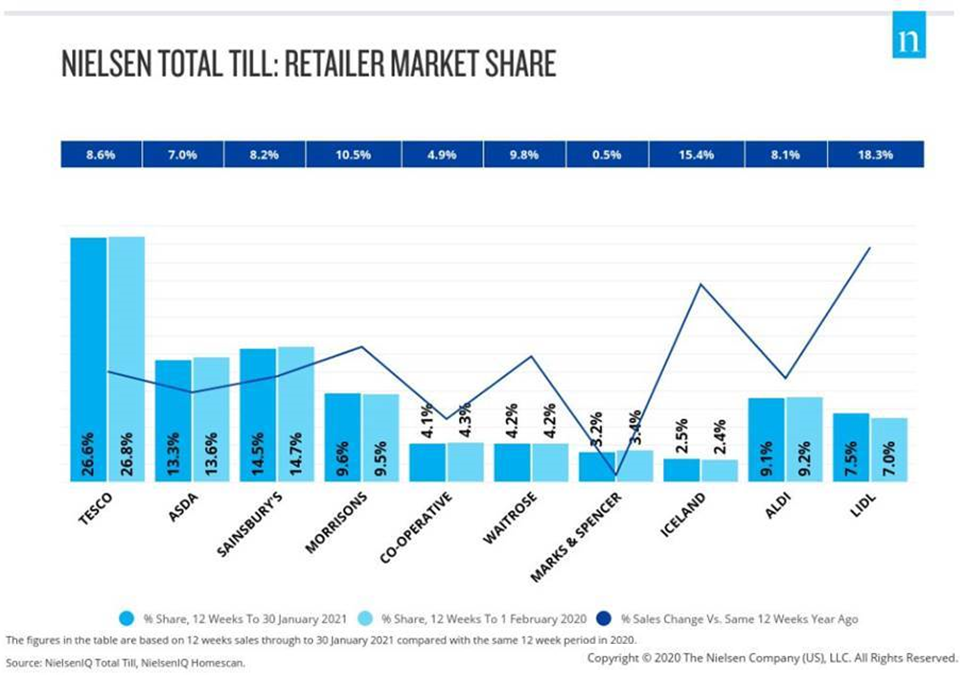British shoppers spent £1.4bn on groceries online during the month of January, a growth of 121% in the last four weeks ending 30th January. A large proportion of this expenditure was from new online shoppers who spent an equivalent of £770m, reveals new data released today by NielsenIQ.
The online share of grocery sales across British supermarkets doubled to 16% in the last four weeks ending 30th January, up from 8% during the same period in 2020. This is the highest ever share for online grocery sales, exceeding the extraordinary levels last seen in June 2020, when share peaked at 14%.
Data from NielsenIQ shows that during the four week period, 1 in 3 of all British households shopped online (9.3m) and 4.1m of these shoppers were brand new to the channel, the highest number of new online shoppers on record.
The substantial growth of online follows what has been an exceptional January for supermarkets, in which total till sales in the last four weeks grew by 10.6%, also the highest growth since June 2020. This is an unusually strong grocery sales growth for January, which has typically been a month of subdued growth following the festive period.
In terms of retailer performance, Morrisons (+10.5%) is the only retailer in the ‘big four’ to have gained market share over the last 12 weeks. However, there was also strong performance from Lidl (18.3%) and Iceland (15.4%).
Mike Watkins, Nielsen’s UK Head of Retailer and Business Insight, said: “It has been an extraordinary January for British supermarkets. This was spearheaded by the exceptional growth in online grocery, in which there were 24 million online shops made – up from just 11 million last January. This growth has once again been driven by increased demand throughout the third lockdown as shoppers shifted spend away from stores where overall growth was flat. Retailers were able to flex their capacity in home delivery and increasingly in click and collect to meet the unprecedented number of new online shoppers.”
Watkins continues: “Looking forwards, we anticipate that this level of spending will remain consistent throughout February, however we will see growth fall in March given the comparative 21% growth of last March, and we estimate that growth for the full quarter will level out at between 1%-3%.”

